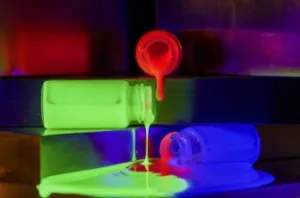On August 28, Judge Richard G. Andrews of the U.S. District Court for the District of Delaware brought the civil case brought by NNCrystal U.S., Inc. against Nanosys Corp. to an administrative close following the case being stayed by the trial court pending an intra partes review (IPR) under the jurisdiction of the U.S. Patent and Trademark Office’s Patent Trial and Appeal Board (PTAB).

Those readers who have never had the pleasure of participating in a U.S. patent proceeding may appreciate some unpacking of previous paragraph. (I speak here as someone who has participated in several IPRs as an expert wintness.) If both parties agree, the civil court can stay the litigation and transfer it to the PTAB, and the PTAB frequently handles such case via an IPR. In an IPR the parties present their evidence to each other, which generally includes depositions of one or more expert witnesses who are then cross-examined by the opposition. This was emotionally exhausting when I first started, but as I became familar with the standard attorney’s tricks and the rules of the road, it almost became enjoyable. A video and/or audio recording is made of the proceedings, which is also recorded by a court reporter. The results are sent to the PTAB, which makes its ruling.
In this case, both Nanosys and NNCrystal agreed to the stay following a PTAB statement saying that Nanosys was likely to prevail on the evidence.
So what is the issue? NNCrystal US is a U.S. subsidiary of China-based NajingTech, which was founded by Dr. Xiaogang Peng, previously a professor at the University of Arkansas. Peng had obtained the rights of patent 7,105,051 (‘051 patent) from the University of Arkansas, and based his suit against Nanosys on this patent. The US PTO questioned the validity of NajingTech’s IP, which resulted in the stay of their lawsuit.
The key claim in the ‘051 patent is the use of a non-coordinating solvent during the processing of the quantum dots. Nanosys says this technology was known in the art prior to the filing of the ‘051 patent, which is why Nanosys believes the patent is invalid.
“The process cited in the patent is not different from that which was already in practice at that time by others,”
said a Nanosys statement, which continues to say “The PTAB however considers this compelling.”
Says Nanosys:
“Our process is different from this and does use the lowest cost raw materials available. We have some key process technologies which are much more advanced than anyone else, and as a result have a very competitive product cost. We believe that NN Crystal/NajingTech brought the suit because they could not compete on economics.”
Nanosys controls well over 90% of the global market for quantum dots. It expects its customers to ship more 10 million tablets, notebook PCs, monitors and TVs based on its technology to ship in 2020. Brands using the technology today include Acer, ASUS, HP, Hisense, Samsung, TCL, and Vizio.
The IPR and the PTAB’s decision will tell us if this is the frivolous suit it appears to be. There is no shortage of those in patent law. In addition, Nanosys says they don’t understand why the patent examiner approved the ‘051 patent to begin with. With other patents, I’ve wondered that myself. (KW)
Ken Werner is Principal of Nutmeg Consultants, specializing in the display industry, manufacturing, technology, and applications, including mobile devices, automotive, and television. He consults for attorneys, investment analysts, and companies re-positioning themselves within the display industry or using displays in their products. He is the 2017 recipient of the Society for Information Display’s Lewis and Beatrice Winner Award. You can reach him at [email protected] or www.nutmegconsultants.com.
 Nanosys quantum dot materials in suspension. (Image: Nanosys)
Nanosys quantum dot materials in suspension. (Image: Nanosys)
da

